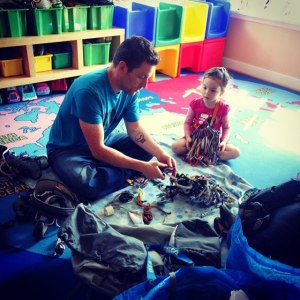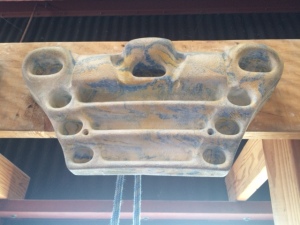
Sorting gear with my partner-in-training
Very early on I realized that the best part of climbing wasn’t the actual activity. It was what the activity called for. You had to find someone you trusted to do it. But it was more than trust. You had to enjoy their company in unexpected situations. Waiting out a storm in a tent near the summit of Mt. Rainier can seem like an eternity with the wrong company. You have to be forgiving of each other’s habits. Sometimes you have to share the same sleeping bag, eat with the same spork, and definitely share the same climbing gear. You need to have the same sense of humor in this grind. You also have to be okay with long silences.
I’ve passed up the opportunity to climb with some really accomplished mountaineers. I could just tell it wasn’t a good fit. If I want to climb a big mountain and I don’t have any of the usual suspects available I start looking for the right person. It starts with a date, or a series of dates. We start off on some local crags. My partner has to move at the same speed as me. They have to climb the same grade. They have to want to be efficient with their time. If they aren’t mindful at the crag, then I wouldn’t necessarily expect them to be on a Grade V objective.
When you find the right climbing partner, it is what makes climbing something more than what it is. You can’t fully embrace this beautiful activity by yourself. The experience needs to be magnified and enhanced by the person on the other end of the rope. You only have half of the crayons in the box, your partner has the other half.
A good partner is like a security blanket. A good team can get out of most any situation. A bad one creates alot of their own bad luck. If you are lucky this partnerships lasts, and you accomplish great things together. Sometimes it doesn’t and you only climb one time together. But you never forget it.
This sounds alot like a marriage. Trust. Intimacy. Chemistry. Security.
It really is.








